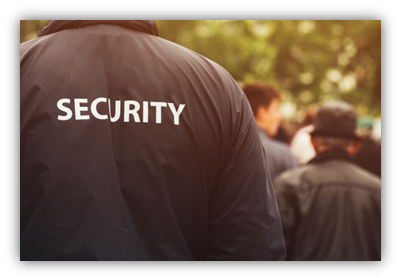Selected News
5 Approaches to Threat and Risk Assessment for Security Professionals in 2023


In an evolving security landscape, physical security personnel remains pivotal in safeguarding business spaces, residential zones, and industrial sites. As 2023 unfolds, the importance of thorough threat and risk assessment methods becomes clearer. Amid technological progress, this article highlights five essential strategies for security experts to enhance their threat evaluation techniques. Whether guarding a thriving business park, a serene residential area, or a bustling industrial hub, these tactics empower physical security personnel to excel.
1. Site Surveys and Vulnerability Assessments:
Conduct thorough site inspections to identify physical vulnerabilities and evaluate potential hazards. This involves examining the property's layout, entrances, exits, fencing, lighting, and overall design. Assess the potential risks associated with the location, the surrounding area, and the type of protected assets or personnel. This approach assists in the identification of vulnerabilities that malicious individuals could exploit.
2. Threat Profiling and Intelligence Gathering:
In 2023, threat intelligence will continue to be integral to effective security practices. To remain ahead of potential threats, physical security personnel must conduct comprehensive threat profiling and gathering of information. Security professionals can gain valuable insights regarding potential threats that may affect their designated area by monitoring local crime trends, geopolitical developments, and historical incident data. Regular updates and collaboration with local law enforcement agencies can provide valuable, actionable intelligence, enabling security personnel to modify their strategies and resources as necessary.
3. Scenario-Based Training
Training is the core of efficient security operations. Scenario-based training involves practicing a variety of threat scenarios, including intrusions, fire emergencies, and natural disasters. Security personnel can develop the requisite skills and intuition for handling high-pressure situations by engaging in realistic exercises. This approach strengthens their confidence and ensures a coordinated response during actual emergencies, thereby minimizing the risks to life and property.
4. Collaboration and Communication
A cohesive security strategy depends on collaboration and communication between security personnel, management, and other relevant stakeholders. Regular meetings, briefings, and debriefings facilitate the dissemination vital information and lessons learned. Maintaining an open communication channel fosters a culture of vigilance and ensures that everyone adheres to security procedures. Collaboration is essential for mitigating multifaceted threats in complex environments such as business campuses, residential areas, and industrial zones.
5. Multi-Layered Security Measures
Multi-layered security uses many security techniques to defend against threats. Physical security professionals can utilize access control, perimeter monitoring, security patrols, and alarm systems to provide many layers of protection. This approach assures that additional barriers prevent, delay, or minimize threats even if one layer is breached. Security experts can intelligently integrate these methods to protect commercial parks, residential districts, and industrial sites.
Conclusion
By employing these five threat and risk assessment approaches, security professionals can strengthen their capacities and create secure environments for everyone. Contact Sentry Security for customized security solutions that leverage these and other strategies. Their knowledge and dedication to protecting diverse backgrounds make them a dependable partner for ensuring the safety of businesses, residents, and industries. Remember that a proactive approach to assessing threats and risks is the foundation of a secure future.
 Sentry
Sentry